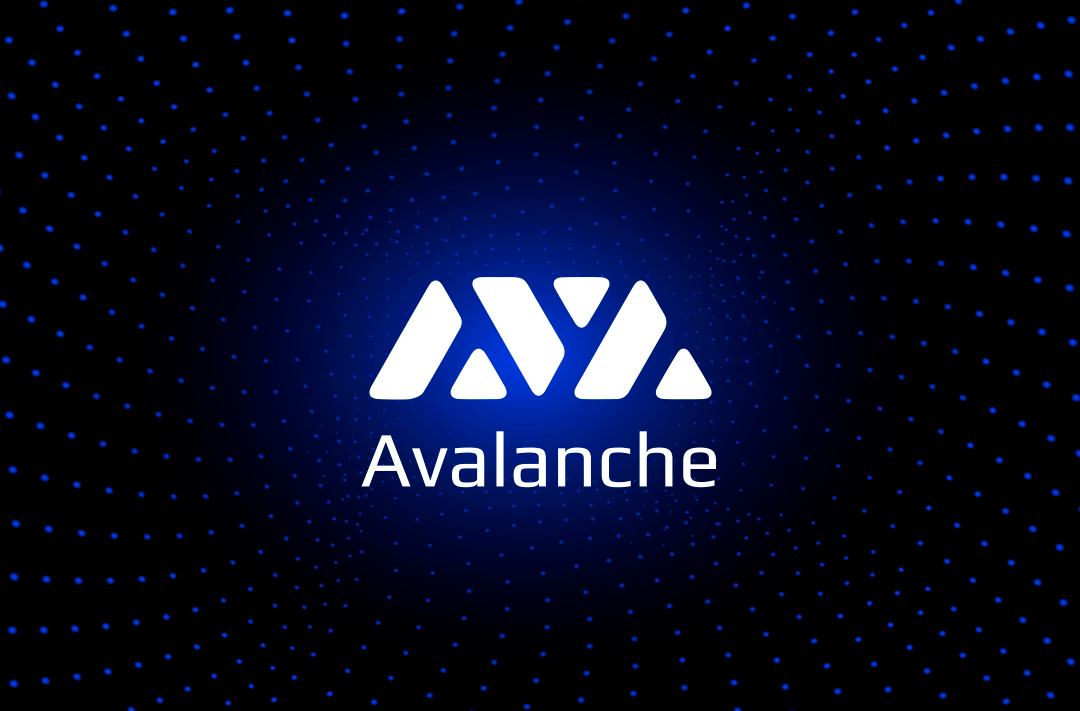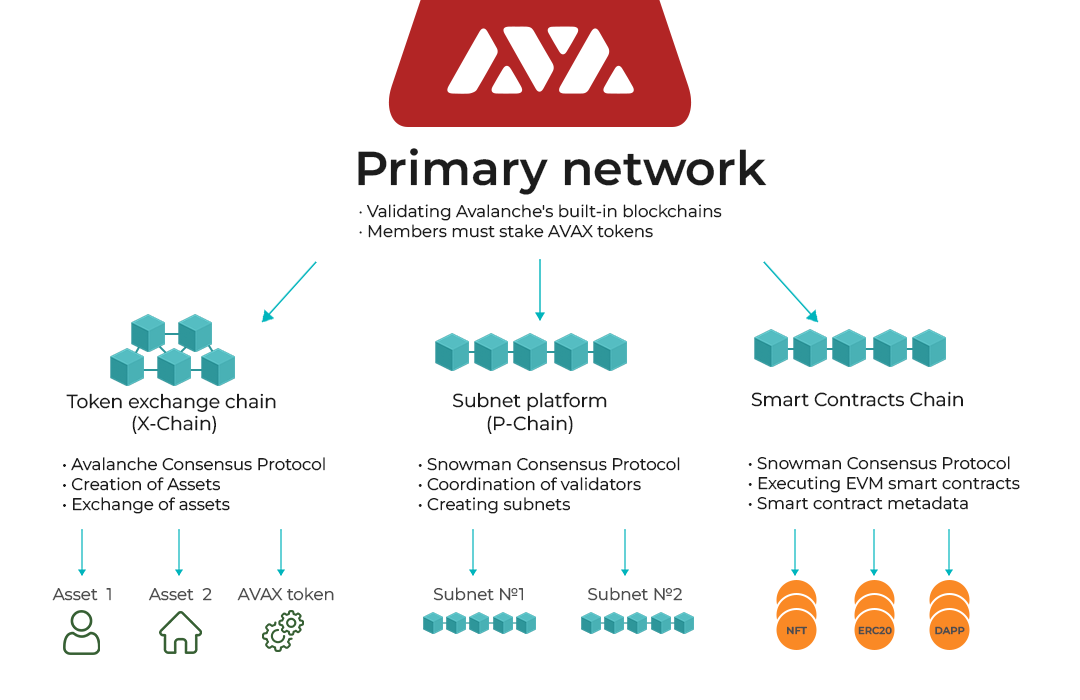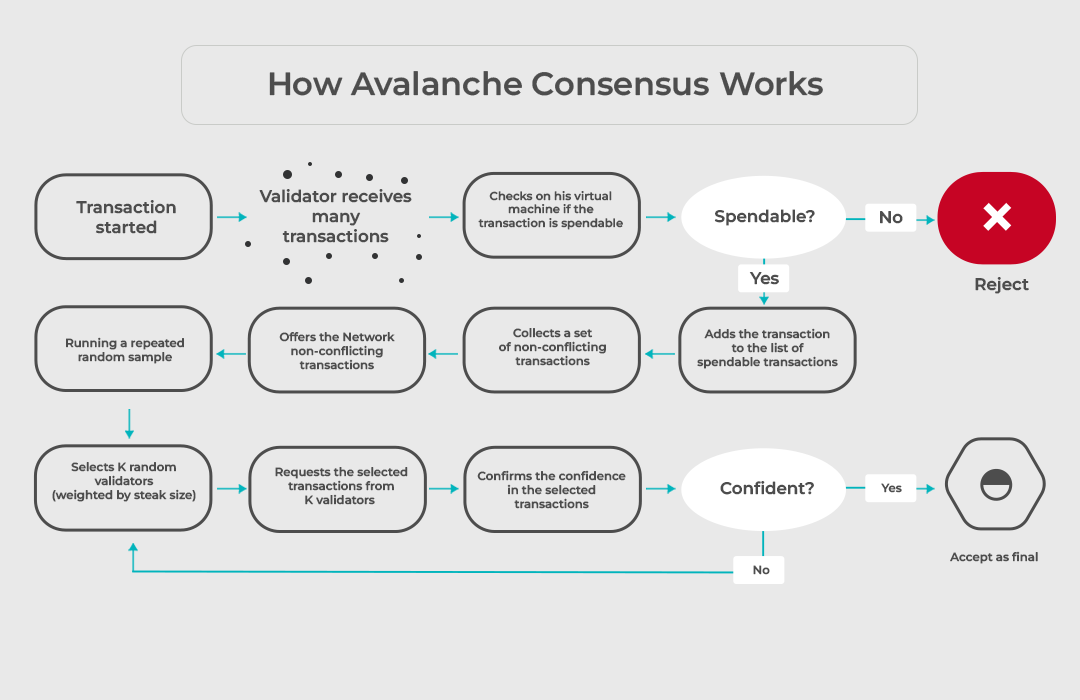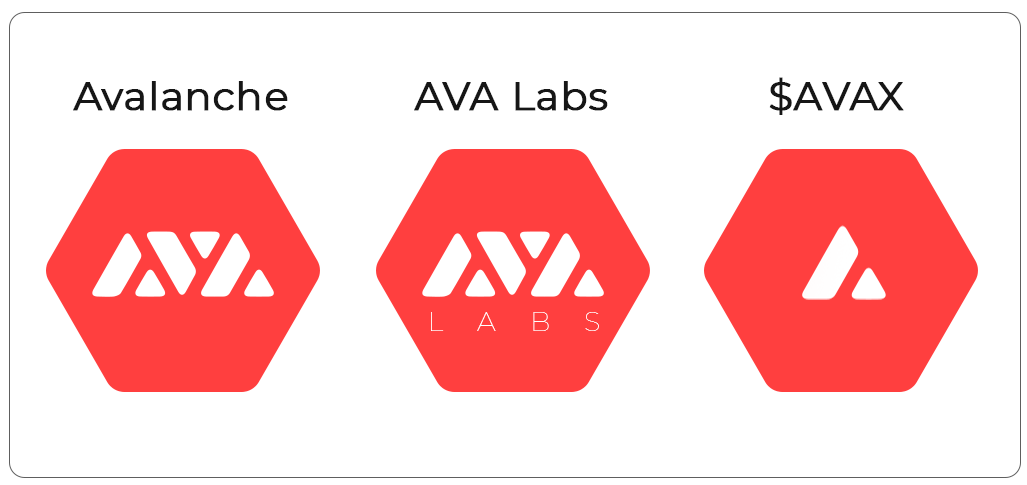What is Avalanche
Avalanche is a decentralized open-source platform for launching DeFi applications, financial startups, trading, and other services

14.02.2022
18059
6 min
1
The main feature of the project, that is, the high speed of transactions, is provided by the parallel operation of three specialized sub-networks: X-Chain, C-Chain, and P-Chain.
Avalanche users have access to staking, the profitability of which is estimated at 7-12% per annum, with a minimum time of blocking funds of 14 days.
Programmers will appreciate the possibility of developing dApps or their own sub-networks with infrastructure. For example, the Pangolin DEX crypto-exchange has already been launched based on Avalanche.
History of Avalanche
Emin Gun Sirer, Professor of Cornell University, is the founder and CEO of the project. Emin is known as one of the creators of the Bitcoin NG protocol. Before Avalanche, he worked on Bitcoin scaling, and the Avalanche Consensus protocol is a direct result of the implementation of that experience. Emin was among the first programmers to describe the main problem of bitcoin, the so-called “selfish mining.”
Kevin Sekniqi previously worked as a programmer and researcher at NASA and as a software engineer at Microsoft. At Ava Labs, Kevin Sekniqi holds the position of Chief Operating Officer.
Maofan “Ted” Yin, like Emin Gun Sirer, is a doctor of computer science at Cornell University. Sirer was one of his consultants.
Ava Labs was created to work on the project, where Emin, together with two developers, Kevin Sekniqi and Maofan Yin, laid the foundation for the future project.
The main idea of the startup was presented to the community in 2018: it showed the functionality of the platform for creating its own multifunctional blockchains and decentralized applications.
The Avalanche test network was launched in April 2020, and the first token sale was held in the summer of the same year, which ended 5 hours after the opening with a full sale of 72 million tokens. In June, the company raised another $12 million for the development. In September 2020, Avalanche's core network was officially launched. And exactly one year later, Ava Labs received a $230 million investment from Polychain and Three Arrows Capital.

Features of Avalanche cryptocurrency
As one of the representatives of Blockchain 3.0, Avalanche was created to solve the three main problems of a distributed ledger, namely, network compatibility, high transaction fees, and network scalability. To do this, Avalanche uses a combination of three linked blockchains:
X-Chain is a network for exchanging AVAX tokens.
The turnover of coins is regulated by variable rules that are copied from Ethereum tokens. The network is designed to operate and trade ARC-20 standard digital assets.
Unlike standard PoW, PoS, and DPoS protocols, the Avalanche blockchain uses a directed acyclic graph (DAG) with parallel transaction processing to achieve consensus.
Some validators randomly check others for the truth of the transaction. The algorithm works in such a way that after several random checks a transaction cannot be false. This is the main secret of transactions being completed in less than one second. Another feature of the network is the creation of parent transactions, the so-called “vertices.”
C-Chain is a network for creating smart contracts that work in decentralized applications. It is based on a copied virtual machine VM from Ethereum, which means that developers can transfer their applications to the Avalanche ecosystem without changes.
The Contract Chain records smart contract metadata that form the blockchain.
The network runs on a modified Avalanche consensus protocol, Snowman.
P-Chain is a blockchain that uses the Snowman protocol and is designed to control network validators. It monitors subnets and allows the creation of new ones. This network operates the Avalanche ecosystem protection mechanism. Validators participate in the consensus of the network by forming closed or public subnets, in which they have the function of confirming blocks and transactions.

How is Avalanche different from other scalable blockchains?
Avalanche is not the first project that aims to solve the problems of scalability, decentralization, and high fees. Moreover, it is a direct competitor to platforms such as Solana, Polkadot, and Polygon. Let's analyze the main differences.
Consensus and TPS
The consensus mechanism, which is optimized for the directed acyclic graph (DAG), is not new. The Proof-of-History protocol at the heart of Solana significantly bypasses the processing speed of Avalanche: 50 000 TPS for Solana, and 6 500 TPS for Avalanche.
However, Avalanche outperforms its competitor in the speed of completion of a single transaction. In Avalanche, the transaction is completed in less than one second, so the network works quickly both at the technical level and on the client part of the user.
Decentralization and compatible blockchains
The network was launched at the end of 2020, with a large number of validators already in place due to the low hardware requirements for the nodes:
- 8-core processor with a clock speed of at least 2 GHz;
- 16 Gb of RAM;
- 200 Gb of hard disk space.
Avalanche supports an unlimited number of blockchains that can be embedded in the form of subnets, according to this parameter, Polkadot is a direct competitor. But the first one uses direct commissions, while the second one distributes access through Parachain Slots auctions.

AVAX token
This is an internal Avalanche token, with a maximum of 720 million coins on the network. AVAX is also the unit of account for subnets, as well as a means of paying transaction fees and subscriptions to subnets.
The token can be stored on the official AVAX web wallet. Coins from the three networks, namely, X-Chain, P-Chain, and C-Chain, are stored at different addresses but are easily converted between one another. You can also connect popular hardware wallets, such as Ledger and Trezor. You can buy the token on the Binance exchange.
What's next for Avalanche?
In an interview with Coinmarketcap, the Avalanche development team said that they plan to continue working on the AValanche-X accelerator. The plan is to provide grants and infrastructure elements to developers of decentralized financial applications.
As an alternative to Ethereum, Avalanche copes with its tasks, thanks to low fees, full EVM compatibility, and transaction speed, which is head and shoulders above Ethereum. That said, in terms of scalability and speed, Avalanche already has a long list of competitors, such as Solana and Polygon.
The only question that remains open is whether such projects will remain in demand after Ethereum 2.0 is launched.
Useful material?
Basics
Why Satoshi Nakamoto’s technical manifesto for a decentralized money system matters
Oct 31, 2022
Basics
Experts evaluated the development prospects of the new ecosystem and the investment attractiveness of its token
Oct 20, 2022
Basics
How to track fluctuations correctly and create an effective income strategy
Sep 13, 2022
Basics
Review of the most profitable offers from proven trading platforms
Aug 29, 2022
Basics
The Ethereum Foundation team has published a breakdown of major misconceptions about the upcoming network upgrade
Aug 18, 2022
Basics
What benefits the exchange offers, and what else is in the near future
Aug 4, 2022









 Telegram
Telegram  Twitter
Twitter